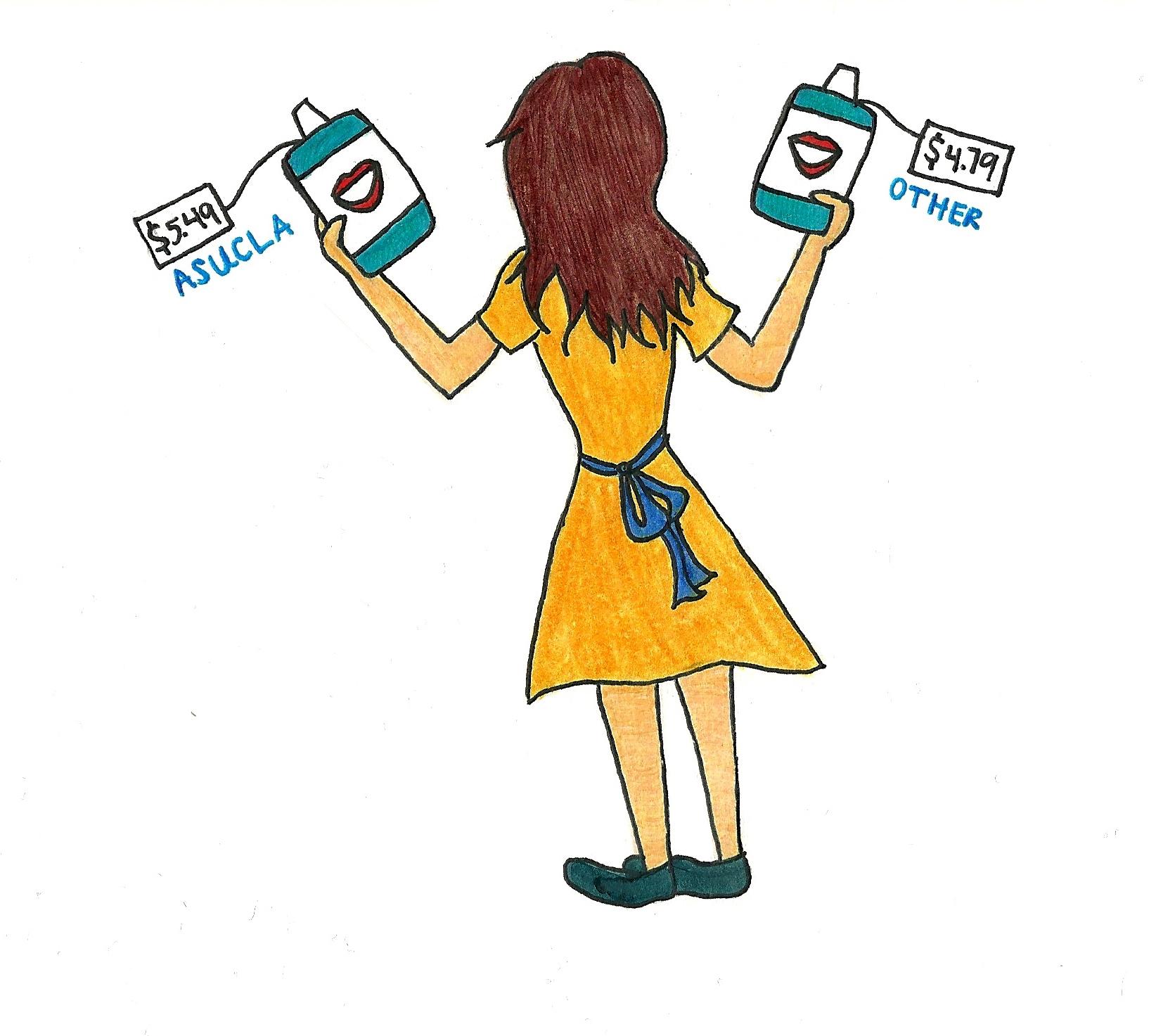It is a Thursday afternoon, and I’m on the grass near Janss steps doing some reading for my classes when I remember I’m out of mouthwash. So, I walk down to the UCLA store and browse the aisles, pay $5.97 for a few more months of minty-fresh breath and continue on my merry way.
At the CVS down in Westwood, the same mouthwash costs $5.32. And at the Rite Aid nearby, it’s $5.21. I know what you’re thinking, and yes, I am a bit of a cheapskate. In the grand scheme of things, 76 cents isn’t very much. But it is about 13 percent less than the UCLA store’s price.
For some consumers buying multiple items, that 13 percent can mean the difference between going to the student store or walking an extra 10 minutes.
However, if the Associated Students of UCLA’s markup to the original cost were lowered slightly ““ say, by 30 percent ““ more students would be inclined to shop there, since prices would be low enough to compete with other stores in the area. The increased traffic would mean more revenue for ASUCLA and would be a good investment, both for the students and for ASUCLA employees.
As the Daily Bruin reported last week, ASUCLA has seen a drop in sales recently, to the tune of $828,000. If ASUCLA stores want to increase their revenue, they must bring down their prices by exploring long-term strategies to compete with nearby stores.
“What most people don’t know is that the revenues from the store keep student fees lower,” said Bob Williams, ASUCLA’s executive director. “ASUCLA is a unique model where all sales in the stores are used to maintain the facilities, operate the student union and food facilities, provide space for student government and student groups, space for student media, and programming money for students.”
The stores’ revenue is not only important to ASUCLA but to the student population as a whole.
ASUCLA already has the advantage of being the only vendor on campus, but that advantage may not be enough, given that approximately three-fourths of students live off campus.
In order for students to shop at ASUCLA, their purchases must make both financial and logistical sense, especially given today’s rising tuition and tough economic climate.
I’m not calling for a sweeping, across-the-board price reduction. For instance, the cost of authentic UCLA-brand merchandise should be kept as is, since visitors and students are willing to pay full price to buy these items from a UCLA-run store instead of going to an outside vendor. And the store already gives an educational discount on electronics from Apple, Hewlett-Packard, and Dell.
The pricing issue lies with the cost of “convenience items”: products that are easily available at any other vendor in Westwood for a much lower price. Last year, profits from these convenience items were about $3.5 million, according to Richard Delia, ASUCLA financial director . That’s about 7 percent of ASUCLA’s total revenue. With a new pricing plan, that percentage could grow.
I’m not advocating a dramatic price reduction either. It is unrealistic to expect a student organization to match the prices of national corporations.
In order to operate under its current model, ASUCLA’s markups are absolutely necessary. Every enrolled student pays a fee of $55.50 per year to use the Ackerman Student Union. If the stores stopped bringing in revenue, the students would have to make up the difference through an increase in this mandatory fee.
But what about a slight reduction in that markup? If it boosts sales, the increased demand will make up for the reduction.
To be sure, it’s a risky plan. But there’s no need to rush into it without testing it first.
A trial period would be a good way to do this. For a given week, ASUCLA could lower its markup from the base cost by 30 percent on all convenience items. If revenue increases, the “sale” could be made permanent. But if it decreases, ASUCLA can always go back to its former pricing standard.
The important thing here is for ASUCLA to stay flexible. As a student organization, it has had to adapt to the times as the student population changes. It must stay open to new ideas but keep true to its mission to provide academic support, products and services to the UCLA campus community with innovation and excellence.
What do you think about ASUCLA’s prices? Email Mirea at nmirea@media.ucla.edu. Send general comments to opinion@media.ucla.edu or tweet at us @DBopinion.
